#hinduisme
Text

El déu Xiva.
6 notes
·
View notes
Text
Halloen, sa treet til mauren

Joda, det er ikke fritt for at det er endel overgrodde tempelbygg og ruiner når en reiser rundt i det gamle Khmer-imperiet. Det blir gjerne slik etter et mektig rike som regjerte et stort område i Sørøstasia i over 600 år.
Dette Tempeltårnet er sånn sett eksemplarisk. Banyan-treet finner støtte hos tempeltårnet til å vinne konkurransen om tilgang til mest mulig lys. Med tilhørende omfattende rotsystem for å få nok vann. Og støtte til det flerplantesamfunnet som gror i, på og rundt dette regnskogstreet.
Så har vi prominent i døråpningen en diger maurtue med små og store tråkk. Denne hadde blant annet en tydelig sti i retning av en enda større tue inne i skogen.
Lingapura, Koh Ker, Chok Gargyar
Disse to tårnene står i tempelkomplekset som i dag kalles Preah Koh Ker. Koh Ker var under to konger Khmer-imperiets hovedstad som Lingapura eller Chok Gargyar, "City of Glance", tidlig på 900-tallet EVT. Før hovedstaden igjen ble flyttet til Angkor nord for dagens Siem Reap for de neste 500 årene.
I løpet av i underkant av 80 år ble det bygget over 40 templer i området. De fleste små, men også tre store konstruksjoner. En egen stil av steinhugging ble perfeksjonert her. Denne stilen er også av de mest kjente i verden, av mer tragiske årsaker.
Avstand skaper tjuv
Koh Ker ligger 120 kilometer unna Siem Reap, og det tar et par-tre timer å kjøre dit i dag. Avstanden til det sentrale Angkor har betydd at dette er det mest plyndrete området både i middelalder og nyere tid. Svært mange av khmer-statuene, spesielt de uten føtter, og ofte uten hode som er utstilt i offentlige og private samlinger verden rundt kommer herfra. I likhet med basrelieffer og andre kunstgjenstander.
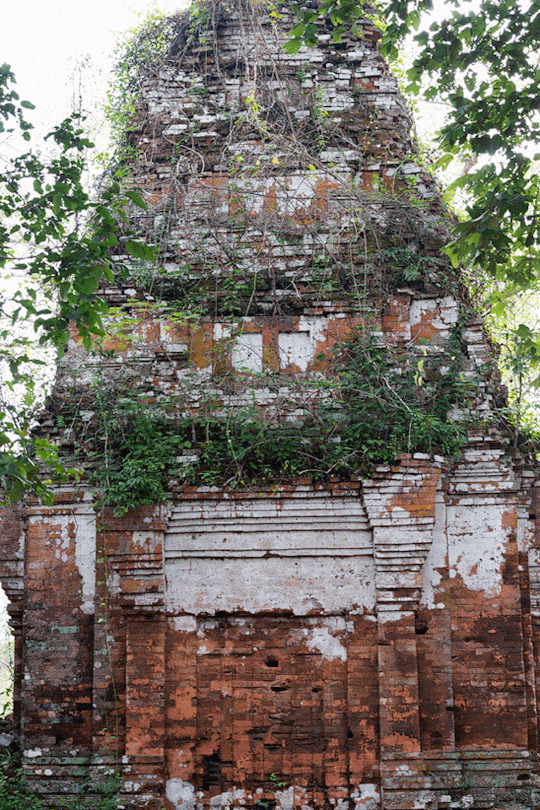
Det er helt vilt hvor mange steder rundt Koh Ker det står steinfundament med en fot og en halv legg etter at en kunsttjuv røsket med seg resten av statuen. Gjerne samtidig knekke av hodet, og så selge det separat. Eller finne tomme veggarealer med spor av meislene som hugget løs veggrelieffene.
I dag er dette det samme som kunsttyverier og kulturutplyndringer. Det meste av det som vises fram av khmer-kunst internasjonalt er kontraband og resultat av helerier og forfalskete dokumenter.
Heldigvis er det som er igjen virkelig verdt et eget besøk når man er i Kambodsja.
For den som vil vite mer, er det en glimrende John Oliver-gjennomgang fra høsten 2022 på HBO, eller her.
#khmer#khmerkunst#khmerkultur#Preah#Koh Ker#Tempel#Tempelkompleks#Banyantre#Maur#Maurtue#hinduisme#kambodsja#opplevkambodsja#kunstplyndring#tyveri#Kunstheleri
2 notes
·
View notes
Text
I saw a post about this so now I'm curious
New poll with more options if you want there
please consider reblogging for a larger sample size unless you're planning to say something that's anti-theistic
#religion mention#mention of religion#my poll#poll#tumblr poll#religion#theology#judaism#catholiscism#christianity#islam#shintoism#buddhism#hinduism#taoism#sikhism#shinto#jewish#confucianism#caodaism#< i know there's more religions#but these are (to my knowledge) the most popular around the world
8K notes
·
View notes
Text
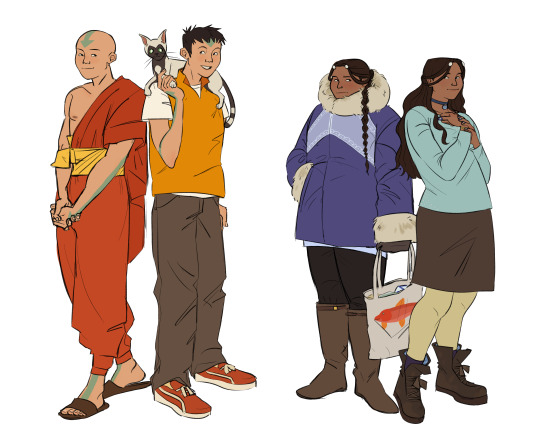
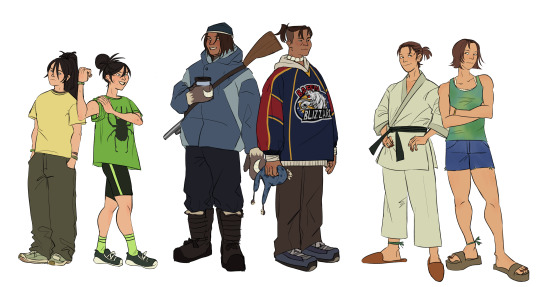
Part 2 of my modern avatar au, The Gaang (part 1)
#avatar aang#atla katara#atla toph#atla sokka#atla suki#atla#avatar the last airbender#modern avatar#atla modern au#my art#atla fanart#kataang#CAUSE THEY ARE IMPORTANT IN THIS AU#lots of inner debates on how to deal with aang's tattoos and if to make him say an actual buddhist#decided that he and monk gyatso (plus a handful of others) are/were part of a largely dying religion of a nomadic group#from the himalayan/tibetan plateau region that's a mix of buddhism hinduism and other religions (plus air nomad culture)#due to the politics of region aang and gyatso traveled around the world which is how he met katara and sokka#who were on a fieldtrip in the south (of canada)#they live in the Qikiqtaaluk Region originally in a smaller northern town but to continue their schooling they moved to iqaluit#Toph is from China and she met the gaang during the first big trip sokka katara and aang took together (at aangs begging)#meet her the summer before katara's first semester of college (so she was 18 aang 16 sokka 19 toph 16)#also by 16 aang is his own guardian cause of gyatso's death so he just does whatever p much#suki from okinawa and they meet briefly another summer of college when traveling to a bunch of islands in the pacific#suki specializes in and teaches ryukyuan martial arts (she's ryukyuan)#all reunite after sokka and katara's graduation (katara graduates a year early) during aang sokka and kataras celebration world tour#where they come into full actual contact with the fire nation crew#they are all in their twenties in these expect for monk aang who is a teen#hehe i cant wait to make more for this auuuu
4K notes
·
View notes
Text
AITA for breaking out of an eternal cycle of death and rebirth?
My (28M) inner Atman (155trillionNB) recently escaped the cycle of Samsara by quenching all earthly desires and achieving Nirvana. But I kinda feel bad for abandoning all of the trillions of souls still suffering on Earth.
Should I become a bodhisattva and guide others on the path to enlightenment or is it okay if I rejoin the Brahman right now?
#AITA#hinduism#buddhism#no offense for any of those religions#I just find it amusing to rephrase theology (does it count as theology without gods?) in internet parlance
607 notes
·
View notes
Text
The idea that some pagans have that you cannot view a deity as a lover, a close friend, as your child, as your parent, is so funny to me as someone who is both Hindu and pagan
In bhakti, there are different types of Bhava, or feelings. There is Shanta Bhava, where the devotee is peaceful. Dasya Bhava, where one serves the deity wholeheartedly and finds joy and bliss in service. Sakhya Bhava, where the deity is a friend of the devotee. Vatsalya Bhava, where the devotee sees the deity as their child. Madhurya/Kanta Bhava, where the devotee sees the deity as their lover.
And to call these practices "humanization of deities" just feels disrespectful to me. If you don't understand it then that's completely fine. But to disrespect forms of devotion just because you think it's "too weird to be real" is just not okay.
#hindu pagan#hindu witch#hindublr#hinduism#paganism#witchcraft#devotee#devotion#deity worship#bhakti
825 notes
·
View notes
Text
I hate how patriarchy has even ruined Hindu mythology so specifically to benefit the men.The casual jokes on family WhatsApp groups about how Mahabharat and Ramayan, the worst wars of all time, were fought because of a woman and how women bring ruin everywhere they go,as if they are the root cause of all suffering. Where in fact the women were LITERALLY the victims, one was publicly humiliated, the other kidnapped.The men have misinterpreted the stories so badly that it physically pains me, god went to war not because of women, they went to war FOR them.Because what happened to the women was WRONG,they weren’t to blame, the ones who wronged them were.
I also see a major polarisation in how a huge section of Hindus treat Sita and Draupadi, and it reminds me of the quote “a woman has to do everything right for her to be a victim and a man has to do everything wrong for him to be a culprit.”It breaks my heart at the number of times I’ve heard men say “well Draupadi shouldn’t have disrespected him,aise toh hona hi tha na fir”,first and foremost,that’s an inaccurate narrative promoted by wrong retellings who need to constantly find a reason to blame the victim,she did no such thing and you can find pretty much evidence for it everywhere.But even if she had, it does NOT make it okay for them to publicly disrobe her.This is one more example of the victim blaming culture that I see deep ingrained in the minds of so many of these dumbfuck Hindus who have absolutely no respect for their culture.So next time don’t go to ram mandirs and krishna mandirs if you can’t even truly understand and respect the relevance behind their existence.
#poems on tumblr#prose#spilled poetry#academia#academia aesthetic#romantic academia#art#prose poetry#taylor swift#heartache#Hinduism#desi academia#desi poetry#desi rant#desi aesthetic#desiblr#mahabharata#ramayan#krishna#hindublr#hindu mythology#hindu gods
461 notes
·
View notes
Text

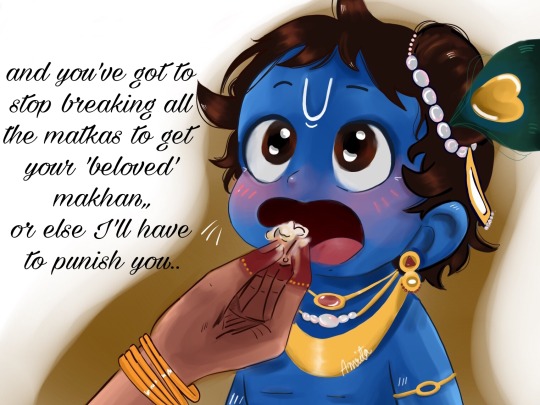

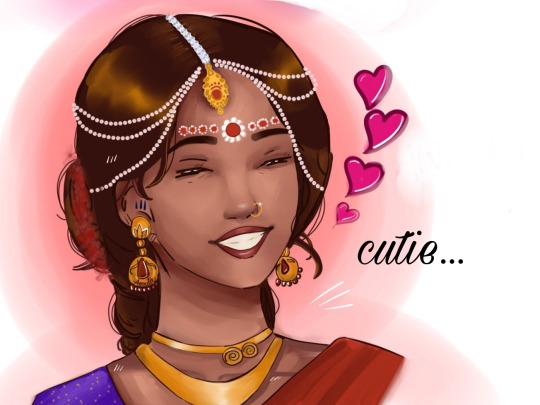
Yashoda maiyaa can never be mad at her kanhu for more than a minute 🥹
Happy Birthday to our sweet, precious 'Momma's Boi'.
HAPPY JANMASHTAMI!!!
#heheh#Janmashtami#y'all should know i dont really know how to....digital art? what#krishnablr#kanhaiya#krishna ji#gopiblr#kanha#desiblr ki gopiyan#krishna#kanhaji#desi tumblr#desiblr#being desi#desi tag#desi humor#hindublr#art#hinduism#hindu god#hindu gods#hindu deities#hindu#digital painting#comic#desi indian#desi girl#desi life#desi aesthetic#desi
521 notes
·
View notes
Text

Paraixurama, avatar del déu Vixnu.
#art#pintura#art digital#déu#deïtat#Vixnu#Paraixurama#sagrat#religió#múscul#musculat#musculós#poderós#hinduisme
1 note
·
View note
Text
Kongelig pløyingsseremoni

Vannbøfler er de vanligste plogdragerne i landbruket i Kambodsja.
Starten av rissåing og pløying av rismarkene er en stor begivenhet i et land helt avhenging av sitt jordbruk, spesielt ris.
I Kambodsja er den kongelig rispløyingsdagen en offisiell fridag, og datoen fastsettes av munker og astrologer etter den buddhistiske månekalenderen og spådom av hvilken dag som er gunstig for å så ris. I år er det 8. mai som gjelder, og i år er det ekstra stas i nordvest.
Mine venner i Siem Reap forteller at Kong Norodom Sihamoni er i byen, og vil foreta den offisielle plogseremonien foran det gamle kongelige palasset i Angkor Thom, ved det som i dag er kjent som Elefantterrassene. Samtidig foregår de regionale SEA-Games, og noen av idrettsøvingene denne uka foregår på anlegg i Siem Reap.
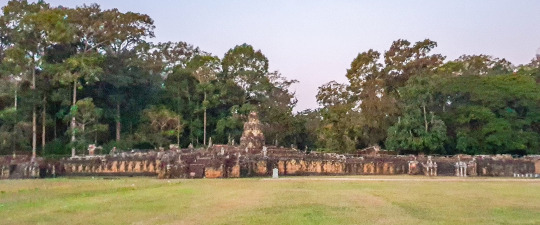
Arealet foran elefantterrassen er arena for den kongelige seremonien.
Så det er visst mye liv i byen, sjøl om tørkesesongen er på sitt varmeste for i år.
Hellige riter og fruktbarhet
Med all festivitas, musikk og pynt som tilhører en hellig seremoni, så foregår den ved at kongen (og eventuelt en dronning) pløyer et viet jordområde med en plog dratt av en okse og ei ku. Deretter blir det sådd ris i denne ferskpløyde jorden. Hvor godt seremonien gjennomføres, vær og temperatur og resultatene av såingen anses å gi forvarsler om en god eller dårlig rishøst.
Rissesongen i Kambodsja varer hovedsakelig fra juni til november, men avhengig av tilgang til vann og arealer, så kan rishøsten strekke seg langt inn i den tørre sesongen i februar. I khmerrikets storhetstid var denne evnen til å dyrke store mengder ris nesten året rundt en nøkkel til å skape et rike med overskudd til å bygge praktbygg, infrastruktur og ha en stor, sterk armé.
Ris er fortsatt hovedbestanddelen i de fleste måltid gjennom dagen. Khmer "bai" betyr uformelt både "ris" og "måltid". Heldigvis er Kambodsjansk ris både variert, aromatisk og smakfull, og blir jevnlig premiert som best i verden. Å kunne ta en liten bolle ris fra riskokeren som stort sett putrer dagen lang i de fleste khmer-hushold, putte på litt aromatiske sauser og en neve grønt er et enkelt, godt og lettvint mellommåltid.

Rismarker i solnedgang.
Gammel fruktbarhetstradisjon, der som her
Tradisjonen med kongelig plogseremoni som en viktig markering i året, med stor symbolsk og religiøs betydning, kan spores tilbake til eldre hindutradisjoner. Tempelskriverier om at dette tillå gudekongen av Angkor å markere i en religiøs fest finnes tilbake til rundt tusentallet evt. Men tradisjonen går sannsynlogvis tilbake til kongene av bystatene i Funan-riket, forgjengerne til Chenla og Khmer-riket, fra starten av vår tidsregning.
En kongelig plogdagsseremoni er også en stor markering i Thailand, som en av de mange ritene og tradisjonene de fikk med seg fra khmerriket de engang var en del av.
I Norge har vi lignende tradisjoner lagt til april etter den gamle primstaven. Her ble nypløyd mark markert med prosesjon og mat og drikkeoffer, med bønn og riter om god avling og et godt kornår. Som det heter i skålen. I katolsk tid ble dette adoptert inn som en kristen "store gangdag" med prest, bønner, røkelse og lignende riter, som så mange andre gamle norske tradisjoner.
#khmer#khmerkultur#ris#rishøst#rissåing#pløying#pløyingsseremoni#kambodsja#khmerkjøkken#mat#buddhisme#opplevkambodsja#drikke#chilli#kulturarv#hinduisme#fruktbarhet#gangdag
0 notes
Text
"Is there a difference between happiness and inner peace? Yes. Happiness depends on conditions being perceived as positive; inner peace does not."
Eckhart Tolle
#spirituality#happiness#peace#inner peace#awareness#consciousness#yoga#buddhism#meditation#philosophy#zen#mindfulness#hinduism#inspiration
2K notes
·
View notes
Text
I like how one of the few things a good chunk of major religions agree on completely is that pomegranates slap.
Christianity 🩷s pomegranates
Islam 🩷s pomegranates
Judaism 🩷s pomegranates
Buddhism 🩷s pomegranates
Hinduism 🩷s pomegranates
Taoism 🩷s pomegranates
I have yet to find evidence of anti-pomegranate rhetoric in Shinto, Sikhism, Confucianism (which is not really a religion but whatever), or Caodaism.
#random#religions#religion#world religions#taoism#christianity#islam#Judaism#Buddhism#hinduism#shinto#Sikhism#Caodaism#confucianism#pomegranate
662 notes
·
View notes
Text


#advaita#nonduality#spiritual#spirituality#yoga#meditation#hinduism#freedom#self inquiry#peace#awareness#consciousness#sri ramakrishna#sri ramana maharshi#ramana maharshi#ramana#sri nisargadatta maharaj#nisargadatta#who am i?#who am i#knowthyself#know thyself#meditatedaily#meditateonthis#awakening#spiritual awakening#awakethesoul#the matrix#self realization#selfless
1K notes
·
View notes
Text

Don't want no other shade of blue but you
#gopiblr#desiblr ki gopiyan#desiblr#devotion#hinduism#hindublr#krishna#krishnablr#kanha#kanhaiya#moodboard#loml#gopi#hindu
522 notes
·
View notes
Text
South Asian and Hindu Influences in ATLA (Part 1)
disclaimer: i was raised culturally and religiously hindu, and though i've tried to do my research for this post and pair it with my own cultural knowledge, i'm not an expert on hinduism by any means. should i mess up, please let me know.
please also be aware that many of the concepts discussed in this post overlap heavily with religions such as buddhism and jainism, which might have different interpretations and representations. as i'm not from those religions or cultures, i don't want to speak on them, but if anyone with that knowledge wishes to add on, please feel free.
it's well-known that atla draws from indigenous, east and southeast asian influences, but something i rarely see discussed in the fandom is the influences the show takes from hinduism and south asia, and there are actually far more than i think people are aware of.
so here's a (non-exhaustive list) of the main inspirations atla drew from south asian culture and hinduism, starting with...
The Avatar
the title of the show itself is taken from the ancient language of sanskrit, often considered the sacred tongue of the hindu religion. in sanskrit, the word "avatar" means to "descend" or "alight".
the concept of the avatar is a very old one, referring to the physical incarnation of a powerful deity or spirit. the idea of the avatar is most often linked to the god Vishnu, one of three supreme hindu gods collectively called the trimurti, or trinity. the avatar is said to manifest upon earth primarily in times of great need, when balance must be maintained between the forces of good and evil.
atla borrows heavily from this idea in having aang be the incarnation of a divine spirit who returns to the world during a time of immense strife, and is tasked with defeating a great evil to bring balance back to the world. and though i don't know if it was an intentional reference, it's interesting to note that Krishna, the most famous incarnation of Vishnu was also reborn amidst a fierce storm and carried through a raging sea to a new home where he would be protected from the king who sought to kill him. sounds a little familiar, doesn't it?
Agni Kai and the Philosophy of Firebending
the word "agni" derives from the sanskrit name Agni, the god of fire, though it can also generally mean "fire".
the concepts of lightning bending and the sun being the source of firebending are likely also taken from the idea of Agni, since he's said to exist simultaneously in three different forms on three different dimensions: as fire on earth, as lightning in the atmosphere, and as the sun in the sky.
Agni is a significant aspect of many rituals, including marriage rites, death rites, and the festivals of holi and diwali. the concept of Agni is one of duality: life and death, rebirth and destruction. hindu rituals accept and celebrate both aspects, revolving around the idea that destruction is not separate from creation, but rather necessary to facilitate it. the cremation of the dead, for instance, is seen as purification, not destruction: burning away the physical form so the soul is unencumbered, set free to continue the reincarnation cycle.
this influence can be seen in the firebending masters episode, which discusses the idea of fire being vital to life. the sun warriors safeguarding the original fire and demanding that zuko and aang bring fire to the dragons as a sacrifice could also reference the ritual of Agnihotra - the ritual of keeping a fire at the home hearth and making offerings to it. the purpose of this ritual differs depending on which text you refer to, but it is generally believed to purify the person and atmosphere in which it is performed, similar to how zuko and aang must make offerings to ran and shaw and survive their fire before being deemed worthy and pure.
Agnihotra is said to serve as a symbolic reminder of the vitality and importance of fire as the driving force of life, a lesson that zuko and aang also internalize from their encounter with the dragons.
Bumi
bumi's name is taken from the sanskrit word "bhumi", which means "earth". it's also the name of the hindu goddess of the earth, bumi or bhudevi.
one of the things the original animation didn't do and which i really enjoyed about the live action was that they made bumi indian and added desi inspiration to omashu. it makes perfect sense for a king whose name is as hindu-inspired as they come.
NWT Royal Palace
chief arnook's palace in the northern water tribe takes inspiration from the gopurams of hindu temples, massive pyramidal structures that served as entrance towers to the temple.
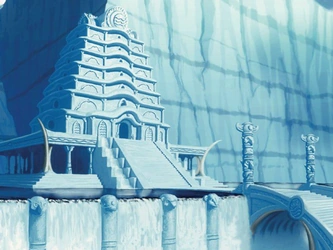

gopurams were built tall enough to be seen for miles around, beacons to signal tired or weary travellers who wished for a place to rest that a temple was nearby. it's a nice touch that the chief's palace is located in front of the spirit oasis, a similarly symbolic entryway to a sanctuary housing otherworldly deities.
Betrothal Necklaces
to preface: i doubt this was an intentional reference, and this great post talks about other cultures that could have inspired the water tribe betrothal necklaces. given the desi influence in the nwt architecture however, i figured it was worth mentioning.
the idea of betrothal necklaces being given to women by their male partners is similar to the thaali, a necklace given to hindu wives by their husbands. during hindu weddings, grooms tie the thaali around their brides' necks to symbolize their marriage. once given, wives are expected to wear their thaali till the day they die, as doing so is believed to bring good luck, health and prosperity to their husbands.
Chi-Blocking
though chi-blocking takes primary inspiration from the art of Dim Mak, it is also influenced by the south indian martial arts forms of adimurai and kalaripayattu, both of which include techniques of striking vital points in the body to disable or kill an opponent.
kalaripayattu also shares parallels with firebending, being a very physically demanding, aggressive martial art that emphasises the importance of discipline and mental fortitude. control of the mind is essential to control of the body, a philosophy similar to that espoused by iroh across the show.
Wan Shi Tong's Library
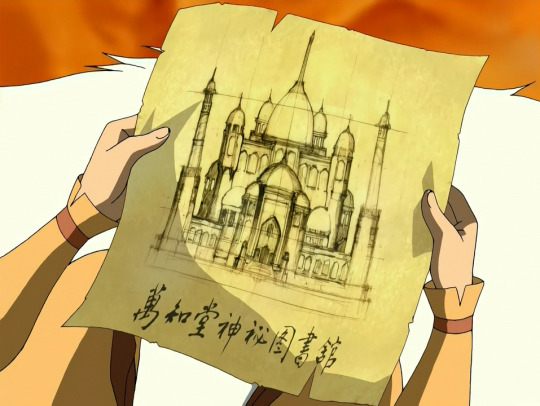
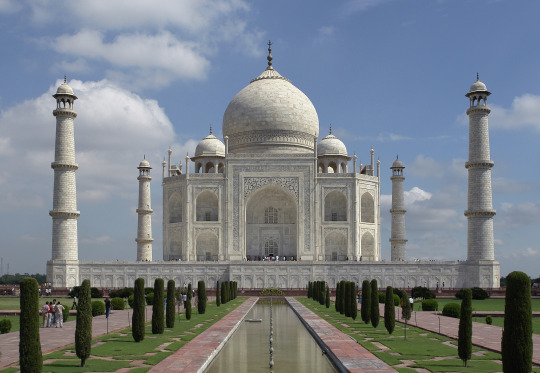
the library draws inspiration partly from the taj mahal, the famous mausoleum constructed by shah jahan during the mughal empire as a monument to his beloved wife, mumtaz mahal.
i'll end this post here since it's getting too long as it is, and the following section will be even longer. for while atla treated the concepts in this post with respect, the same unfortunately cannot be said for its depiction of guru pathik and combustion man - both of which we'll be discussing next.
810 notes
·
View notes
Text
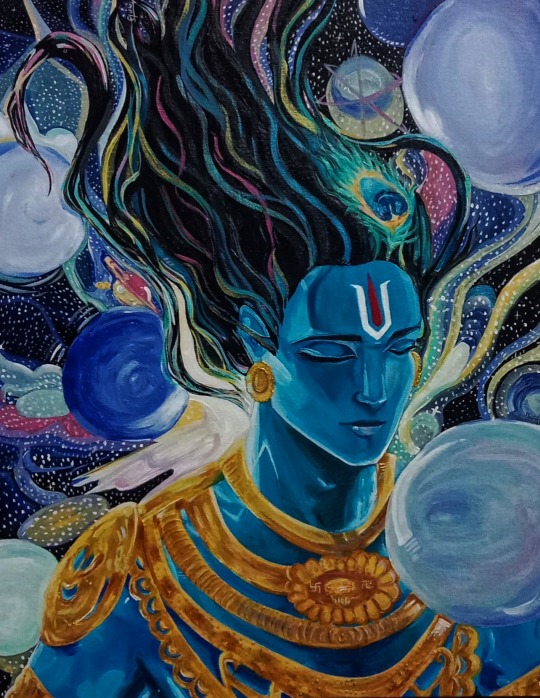
FIRST CANVAS PAINTING OF 2024!! prettu prettu kanhu
(also yea try to find my initials lol,, easily dikh jaayenge but uh huh)
#also#this is not my original idea#i took reference from Pinterest#desiblr#desi#yaay#desi tumblr#being desi#desi humor#desi tag#hindublr#art#india#krishna#artists on tumblr#hindu gods#hinduism#desiblr ki gopiyan#lol#idk man
833 notes
·
View notes